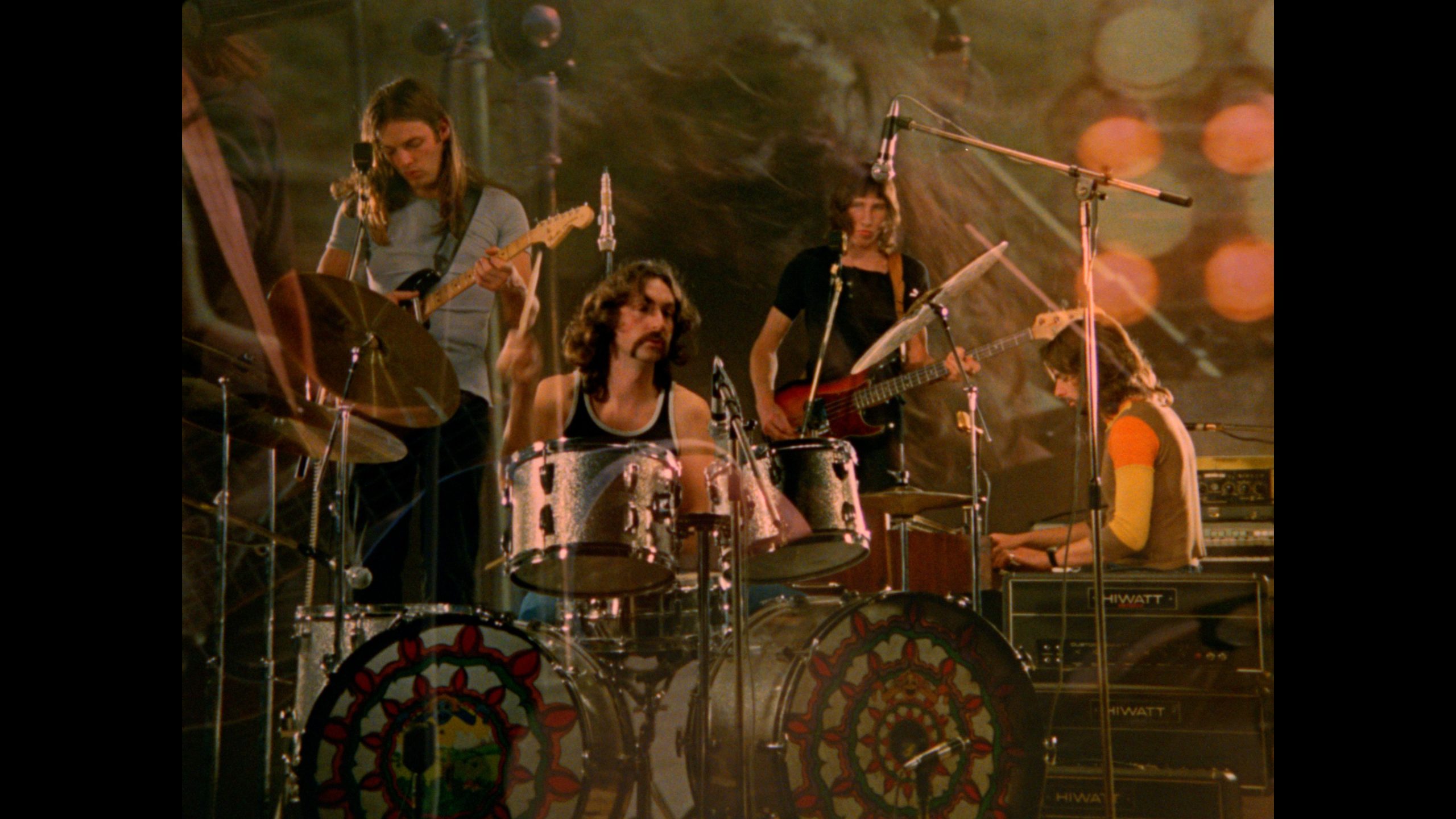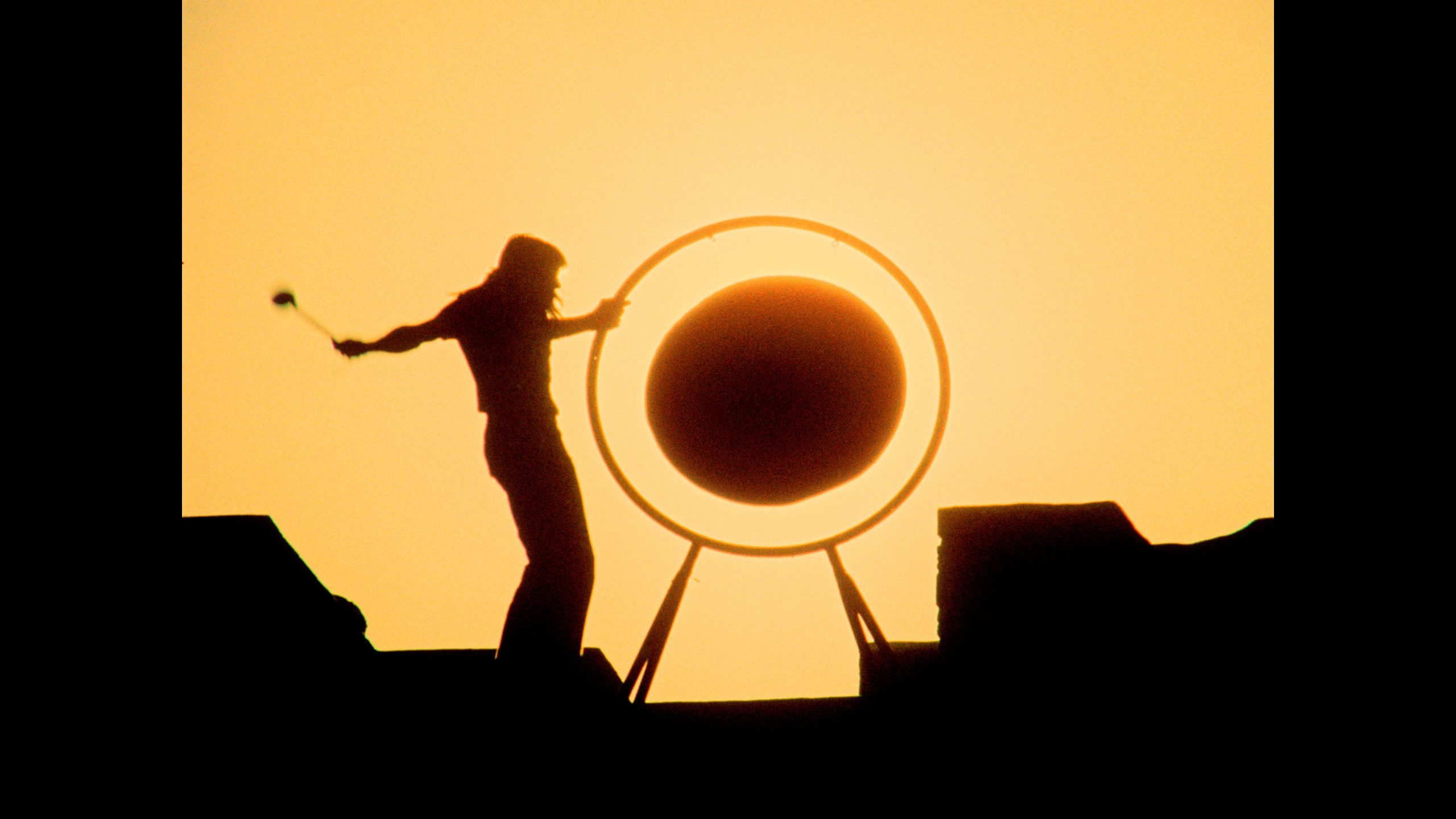Director: Adrian Maben
Stars: Roger Waters, David Gilmour, Richard Wright
Synopsis: British progressive rock band Pink Floyd perform at the ancient Roman Amphitheater in the ruins of Pompeii, Italy in 1971. Although the band perform a typical live set from the era, there is no audience beyond the basic film crew
There will never be a band like Pink Floyd again; I find it difficult to see how any other band could match the sound and style of this legendary, ambitious British psychedelic rock group. Their sonic experiments were so ahead of their time–to the point where the compositions still inspire musicians vastly, like Kevin Parker of Tame Impala, Omar Rodríguez-López and John Frusciante of The Mars Volta, Maynard James Keenan of TOOL, amongst others–and their philosophical lyrics often struck a chord with listeners worldwide, making it easy to be immersed in all senses. Their instrumentation is vivid and unique, transporting you to a transient state where the grooves guide you as the band narrates stories about love, melancholy, despondency, and a range of other topics.
The teleporting nature of Floyd’s music is showcased during one of their live experiments, where they recorded a concert documentary in the ruins of Pompeii: Pink Floyd: Live at Pompeii – MCMLXXII. The concert documentary has been beautifully restored in 4K and is now being screened in IMAX theaters worldwide as part of a special event celebrating these rock gods and their enduring, influential discography and legacy. Live at Pompeii begins with a still black screen, accompanied by a thumping sound whose volume increases as it lingers. It can be drummer Nick Mason smashing his kit, but the sound seems more ominous, as if it came from beneath the earth. Could it be the invocation of the rampaging volcano that once inflamed Pompeii? Is the band summoning the gods to cause another eruption through their music?
The thumping noise then becomes increasingly louder, spreading across the cinema, shaking the floor on occasion, followed by an ambient drone sound from David Gilmour’s guitar. You are exiting the void and entering the scorching earth. And the track that accompanies this introductory venture is ‘Echoes Pt. I’, one of Pink Floyd’s best tracks from 1971’s ‘Meddle’. The perfect way to open the show. The concert-doc is divided into separate song performances, interspersed with segments where the band discusses a variety of topics, ranging from their music experimentation and the industry to British breakfast items. Most of the songs that lead singer Roger Waters and company play are their more psychedelic and experimental joints (‘A Saucerful of Secrets’, ‘Set the Controls for the Heart of the Sun’).
The focus shifts away from their more lyric-driven records, emphasizing instead the band’s experimental innovation. The one I, and many in the audience I watched it with, enjoyed the most was ‘Careful with That Axe, Eugene’, where the band builds up to the cathartic scream by Waters–the best screech in ‘70s rock history, as one fan loudly exclaimed during the title card. Once the scream arrives, visuals of volcanoes erupting – flames burning up the celluloid in which they are framed – appear on screen. It is an eruption of musical artistry, upon which the audience awes in nostalgia for a music landscape now long gone and at how creative and adept these musicians are.
In that very moment, tranquility and destruction, art and nature, intertwine to create a natural spectacle. Another wonder or landmark that could only be lived in at that instant, and with the grace and power of cinema, it can be re-lived. But nothing beats the feeling of watching it at the cinema on a big IMAX screen, as your spine tingles while your heart beats rapidly. In the other tracks, there are some notable moments in imagery and instrumentation, with one sequence referencing Prometheus, who stole fire from the gods, and another honoring the fallen during the cataclysm of Pompeii. It creates a melancholic tone for a project that oozes with life and vibrancy, thanks to Floyd’s grooves and ambiance.
The original version of Live at Pompeii, released in 1974, only had the performances of the song. Still, this restored version added more detail to them and provided some glimpses into the band’s future, which, by the time this concert documentary was released, had reached rock ‘n’ roll glory with their revolutionary 1973 record, ‘The Dark Side of the Moon’. Scenes of the band members creating, composing, and writing the tracks that comprise the aforementioned albums are examples of this. You hear iconic bass lines, piano instrumentals, guitar riffs, and more from songs like ‘Brain Damage’, ‘The Great Gig in the Sky’, and ‘Us and Them’ (which holds a special place in my heart).
These scenes may be minute in the grand scheme of Live at Pompeii. However, they encapsulate, in the slightest details, even by the standards of an instrumentally bombastic band, the creative process and essence of Pink Floyd and their upcoming turn, decades later. Restoring Live at Pompeii at this time and age serves not only as a gift to the band, giving us this lovely music, but also as a commentary on the music industry of today. The artistic practices seen in the film are as antiquated as the relics seen in Pompeii. Yet they are more significant than everything made currently. Oh, what a time in music that must have been… Now it is time for a new revolutionary cataclysm to reshape the music world once again and birth a new generation of inspired talents, not tedious acts.







